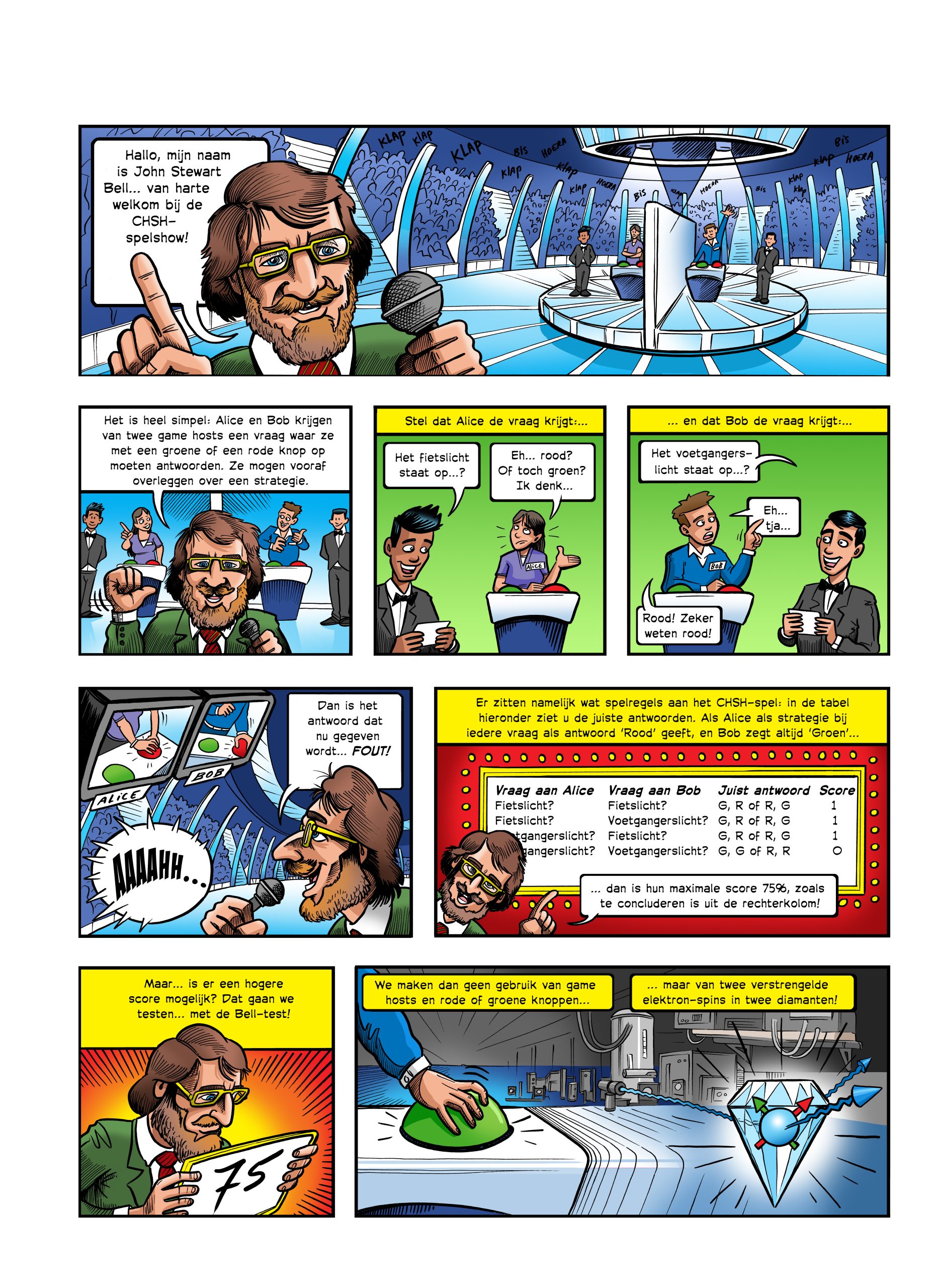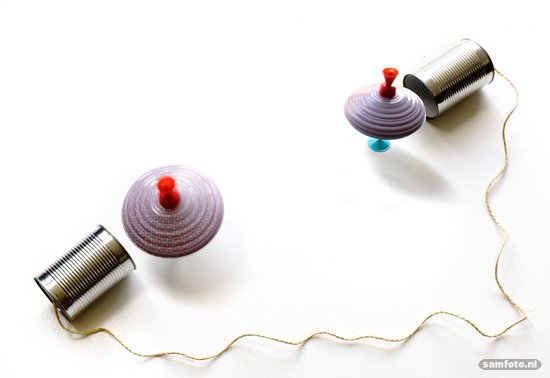While everyone in the Netherlands is watching the World Cup or enjoying their holidays, it will be a working summer for Ronald Hanson and his group. Their experiment will make history, because, if it is successful, it will prove Einstein to be in the wrong.
In 1935, Albert Einstein and two other physicists, Boris Podolsky and Nathan Rosen, described a thought experiment1 that they hoped would demonstrate the absurdity of quantum mechanics, and in particular the idea of ‘entanglement’: the phenomenon that two particles can be described by a single wave function. This would mean that a measurement of particle A would have immediate consequences for the state of particle B, even if particles A and B were metres or kilometres apart. This would imply that they were able to communicate with each other faster than the speed of light. This absurdity has since been known as the EPR paradox, and it is the subject of the experiment that is now in its final stages, conducted by Prof. Ronald Hanson of the Quantum Transport department of the Faculty of Applied Sciences and his group.
“Einstein said: ‘the state of one of the particles determines the state of the other particle’. But I think his observation was wrong”, says Hanson. Einstein’s misconception, according to Hanson, concerned ‘local realism’. ‘Locality’ means that there is no spukhafte Fernwirkung (spooky action at a distance) as Einstein put it. The same holds for the equally plausible idea of ‘realism’, which means, according to the scientific genius, that the moon exists even when we cannot observe it. In other words, that reality is independent from our own observation. Seen from this perspective, the entanglement of two particles leads to various absurdities. “But if you let go of the idea of locality, then you see two particles in a state of entanglement”, according to Hanson. “As soon as you perform a measurement, that determines the state of each particle. No communication is necessary to achieve this: the effect is instantaneous. You just have to dare to let go of the idea of locality.”
World news
A year ago, Hanson’s group published2 an article in Nature about two entangled electron spins set at three metres apart. The experiment’s set-up included two cryostats with a chip at the bottom with a diamond in which an electron was manipulated using laser pulses and microwaves. The electron spins were bombarded with a laser pulse, and then reviewed to see if entanglement had taken pace, on the basis of light emission. It only worked once in every ten million attempts, yet it was still world news.
Now, the ‘diamond group’, including PhD student ir. Bas Hensen, is repeating the experiment but with an increased distance of a kilometre between the entangled spins. One half of the set-up is in the cellar of Applied Physics; the other half is in the Reactor Institute building. The fibreglass cables that connect the set-ups come together in the EEMCS building.
“The three-metre experiment was based on the assumption that quantum mechanics works, and we wanted to demonstrate entanglement at a distance”, is how Hanson compares the experiments. “Now quantum mechanics themselves are being questioned, and we have to prove that entanglement really does exist.”
Exactly fifty years ago, in 1964, the Northern-Irish physicist John Stewart Bell published3 on the subject of how it should be possible to demonstrate quantum mechanical entanglement in the ordinary macroscopic world. Five years later, Clauser, Horne, Shimony and Holt4 specified it further with their scenario for a game show called the CHSH test. Here, candidates, using chance or cunning strategy, had to give one of two possible answers to two possible questions (see the comic strip in the following pages).
Competition
In the lab, the candidates have been replaced by two electron spins in diamond lattices. Firstly, they are entangled. The entanglement is shown by a simultaneous registration of two single photons on a half-transparent mirror in the cellar of the EEMCS building. Next, there is a question in the form of laser pulses that force the electron spins into an excited state, whether or not in combination with a microwave pulse that rotates the electron spin 90 degrees. The answer (red or green, 0 or 1) is in the form of light or no light emissions from the electron spins. The statistics of the measurements should reveal whether or not the electron spins show more coherence than could be anticipated by chance. Hanson expects to find entanglement on average once every ten minutes, and expects to need many thousands of measurements. This adds up to a measurement period of more than a week and is the programme for this summer. The PhD students will not be taking time off for holidays, as competitors are hard on their heels.
Since the Bell Test was proposed, ten notable experiments have been attempted to demonstrate entanglement, but in none of these cases was the evidence entirely incontrovertible. Furthermore, the test requires that a measurement be made every time entanglement occurs. If measurements are skipped, this could influence the statistics.
Both the timing and the efficiency of the measurements push the equipment and the team to their limits.
The team gains extra motivation from the knowledge that there are at least four other groups in the race in various parts of the world. The Delft group views the Ludwig Maximilian University in Munich as their closest rival, where Harald Weinfurter’s group is working with trapped atoms. In Vienna, Anton Zeilinger has been working for many years with trapped photons over distance. This technique is also employed by the groups of Paul Kwiat (University of Illinois) and Andrew White (University of Queensland, Australia).
So there is another World Championship that will be played out this summer, although it is not one which you will see much of on TV.
1 Einstein, A; B Podolsky; N Rosen, ‘Can Quantum-Mechanical Description of Physical Reality be Considered Complete?’ Physical Review, 15 May 1935
2H. Bernien, B. Hensen & R. Hanson, ‘Heralded entanglement between solid-state qubits separated by three meters’, Nature, 2 May 2013
3Bell, John. ‘On the Einstein–Poldolsky–Rosen paradox’, Physics, Nov. 1964
4J.F. Clauser, M.A. Horne, A. Shimony, R.A. Holt (1969), ‘Proposed experiment to test local hidden-variable theories’, Phys. Rev. Lett.





Comments are closed.